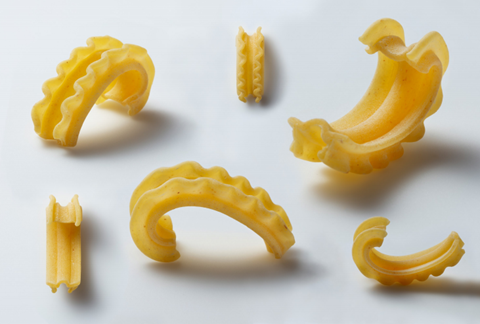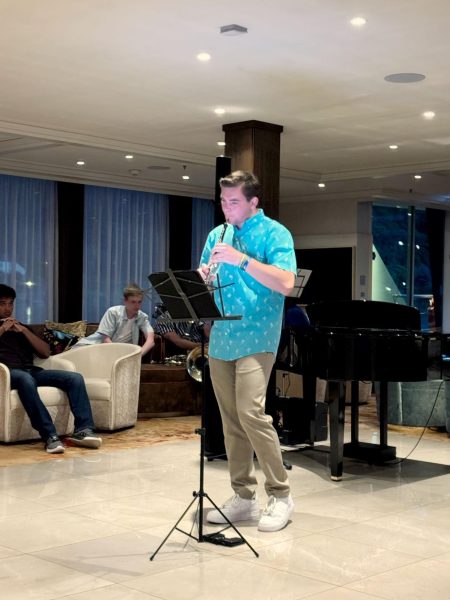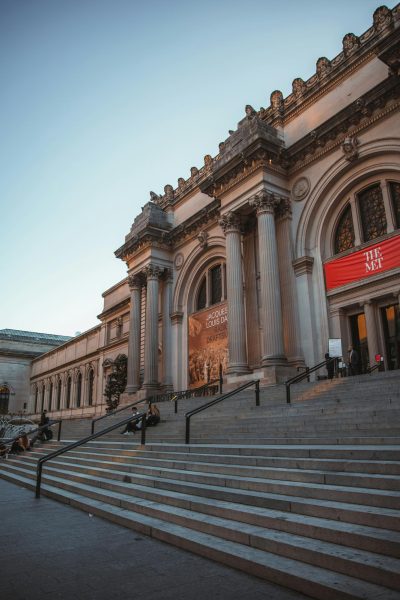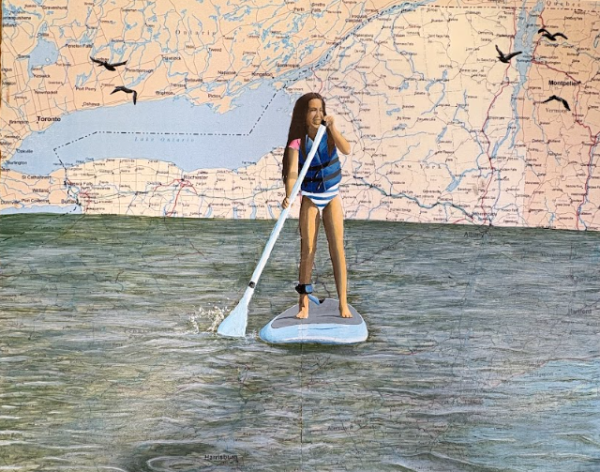Q&A with Dan Pashman, Creator of Cascatelli Pasta

The new pasta shape, cascatelli, invented by Dan Pashman.
Q: When and why did you first get the idea to create a new pasta?
A: I host a podcast called The Sporkful, which is my main job. Originally, I just wanted to do something that would let me tell a cool story on The Sporkful, and so I wanted to create a new food and we would describe the process in the matter. I wanted to invent in a way that it would be real, like I wanted to make a new product. I was thinking what food it would be, and I knew I wanted it to be a food that everyone knows, loves, has an opinion about; something that wasn’t too expensive; it was shelf stable (so it would not spoil); I wanted to be able to ship it all over the country so everyone in the country will be able to buy the thing; I did not want it to just be a fancy and expensive product; and I wanted everyone to be able to purchase it, so I settled on pasta shape. I felt like I love pasta- I’m not a chef, I’m not Italian, I’m not an expert on pasta – I’m only good at eating it, that’s the only talent I have. I love all pasta shapes, but there is one thing that annoys me about them, which is that they all have one thing you wish it had, and that made me wonder if I could do better.
Q: Were there any other shapes you were going to make for the pasta that didn’t work? Why didn’t they work?
A: I tested and ate every type of pasta shape I could get my hands on. I concluded that I wanted the pasta to have ruffles and a tube together in the same shape. At first, it turned out that that was impossible, like it is not physically possible to combine those two together. In the way pasta is made, it is impossible for ruffles and tube to come together and form one pasta shape. The movement that was required to make the ruffles would crush the tube, so I had to give up that dream.
Q: What are your thoughts on spaghetti?
A: I do not love spaghetti. I will eat any pasta you put in front of me. I will eat spaghetti, but I just do not think it’s that great. When eating spaghetti, it is too thin, you cannot sink your teeth into it, it’s messy to eat, and it does not hold enough sauce. When you eat spaghetti and meat sauce, you eat all the spaghetti and there is a ton of sauce left over. This shows that it doesn’t have a good shape. I’m glad it exists, but I just think we could do better.
Q: What, in your opinion, is the next best pasta to cascatelli, and why?
A: Aside from cascatelli, I love Mafalda, which is also known as Mafaldina. It’s like fettucine, but with ruffles down the edges, or like a lasagna that’s narrow enough to twirl it around your fork. I also love cavatappi, which is like a tube corkscrew on the outside. Those are some of my favorite pastas.
Q: What was your main motivation to create cascatelli?
A: At first, I wanted to create cascatelli because I just wanted to tell a great story for my podcast. As I worked on it more, the motivation became to bring together all my favorite elements of pasta in a way that they were never brought together before. Then it kind of became to really try to make people think about pasta shapes. People think of five or ten shapes that they get at the supermarket and those are fine. I wanted to get people to think about pasta shapes more and to realize like, ‘Oh yeah, spaghetti isn’t that great.’ I just never questioned it. People put spaghetti in front of me and I eat it, but I think a lot of what I wanted was to get people to have a new, deeper appreciation for the world of pasta shapes and to understand that there’s still opportunity for innovation and new ideas for pasta.
Q: Do you plan on making/branding any other types of pasta or other foods soon?
A: I am not planning on making any other pasta or food right now. Maybe some time down the road, but right now, it’s still only been a couple of months since the pasta came out, so my head is still kind of spinning a little bit. You know, it sort of went viral on me, and we’re trying to catch up. So right now, I’m trying to figure out what I’m doing with this pasta shape, but down the road, who knows what will come next.
Q: Do you think cascatelli will become as big as spaghetti, penne, rigatoni, etc. one day?
A: I don’t think cascatelli will become as popular as classic pastas because those were created several hundred years ago. Cascatelli doesn’t have to be as successful; I’m fine with it having an era for being popular. There is room in the world for a lot of pasta shapes. If cascatelli becomes one of the shapes that is out there and in stores and restaurants for years to come, I will be very happy.
Q: Why did you name the pasta cascatelli?
A: My favorite shapes are the ones that were named from an Italian word that looks like the pasta. There’s too many to name, but that’s what I wanted to do. I then had to ask myself, “What does this look like?” Most of the names we came up with first were too long, and it was hard for the average non-Italian speaking American to pronounce it or spell it. We wanted a name that people would remember. The name I liked the most before cascatelli was Mula Pat, which means millepede, but people thought it was gross that it was named after a millepede. We then came across cascatelli, which is like the word little waterfalls, because if you hold the pasta vertically, the ruffles kind of look like flowing water.
Q: What has been the best part of this whole experience for you so far?
A: The best part of this experience is that my wife and daughters were part of the process of creating the shape. Also, people all over the country and the world are buying it and then they’re cooking it. I enjoy the fact that people are coming up with all these creative sauces and other preparations for this pasta. It’s a very incredible feeling to turn on your Instagram stories and see all these people all over the planet, cooking this pasta that I invented.


































